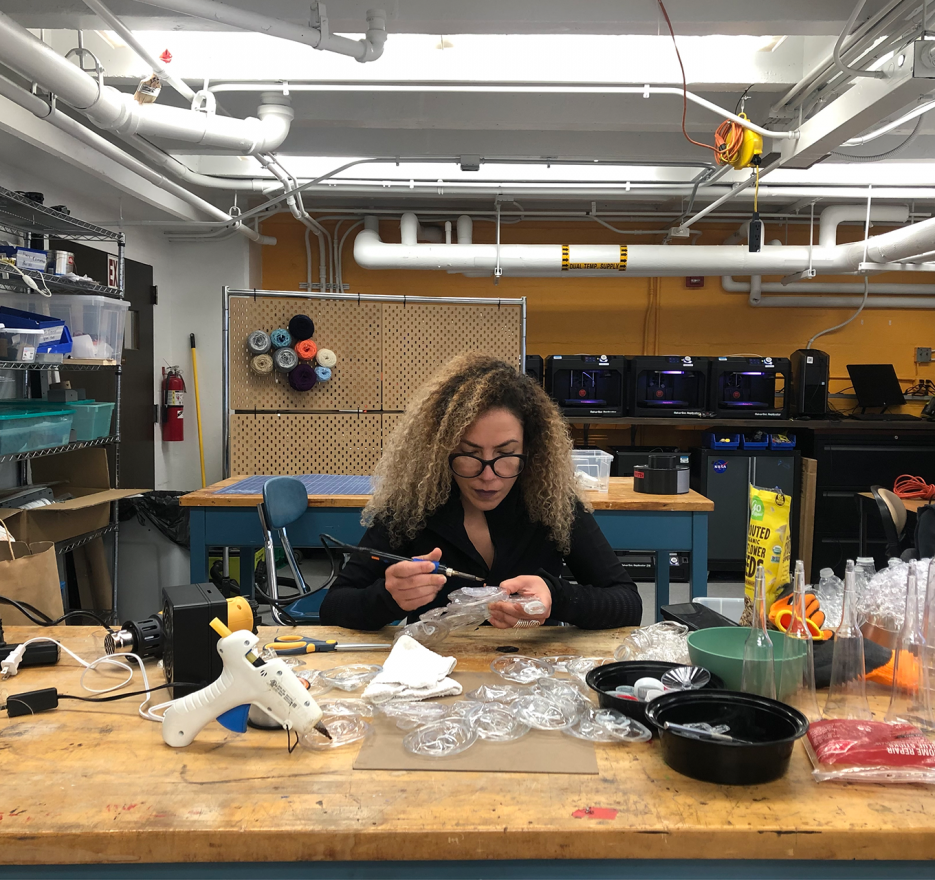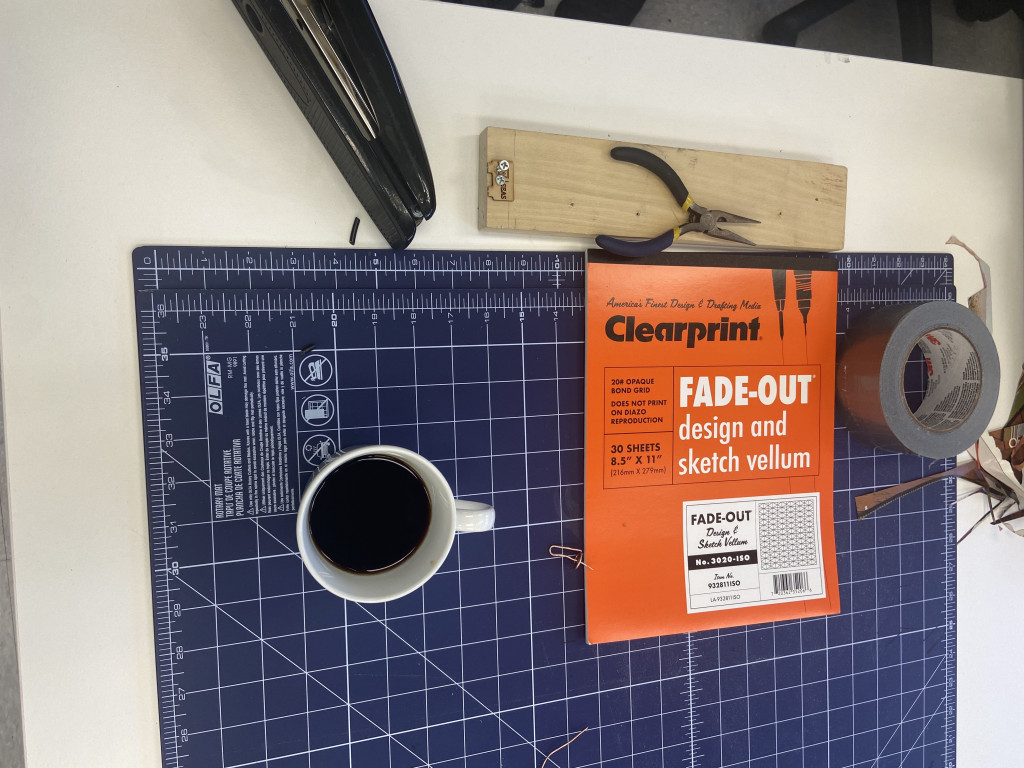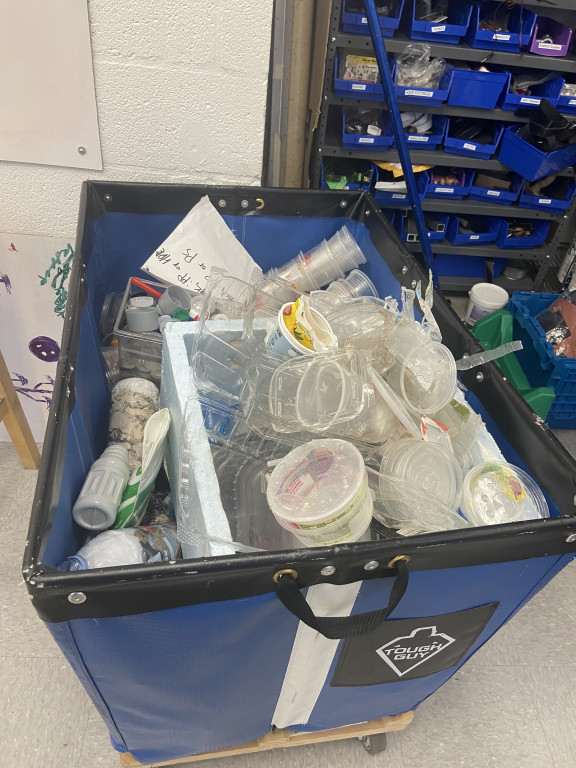
Celia Ledón at the Innovation Center at George Washington University. (Erica Wortham)

Celia Ledón at the Innovation Center at George Washington University. (Erica Wortham)

Upon entering the Innovation Center at the George Washington University in Washington, D.C., one’s eyes may gravitate towards the freshly brewed black coffee or the rows of tables to work on and supplies like rulers, scissors, and fabrics scattered everywhere, all signs of hard work. It was a craft-lover’s heaven, reminiscent of a Kindergarten art class (minus the scissors).
At GW’s Innovation Center, students are working on an installation with Cuban artist and costume designer, Celia Ledón, for The Kennedy Center’s RiverRun Festival on March 22 to April 22, 2023.
The festival is a celebration of the world’s rivers and their role as life-sustaining and art-inspiring passages that course through our planet. With an emphasis on social responsibility, the center commissioned Ledón to construct a large-scale figure-garment made solely out of plastic waste with the goal of raising awareness about the dangers of plastic in our waterways and everyday lives. The installation, metaphorically named The Shape of Water, will be showcased in April in honor of Earth Day.

Aside from having an eclectic fashion sense, Ledón is known for designing garments from materials found in trash bins, recycling containers, and piles of unwanted clothes. High fashion runways, numerous art exhibitions, and even feature films, both in Cuba and internationally, display her work.
In the center of the room, and wearing her iconic chunky black boots and wide, black-rimmed eyeglasses, Celia Ledón was hard at work. She used a gigantic stapler gun to piece together flattened water bottles, which seem to be an omnipresent form of litter in the city. The center had collected hundreds of them. A student next to her melted pipettes with a heat gun. Other students constructed ecobricks, plastic bottles stuffed with trash and other plastics to create a dense structure. “It’s all about trial and error,” said Ledón, as she explained the method to her madness. Ledón didn’t have a comprehensive plan of action for the installation, which is how her designs typically start. All ideas were welcome and would be considered as part of the installation in some way, yet it is too early to tell what it will look like.
By helping with the installation, students earn service hours towards a course called Food, Nutrition and Service, taught by Tara Scully, Ph.D., Director of the Sustainability Minor Program and Assistant Professor of Biology at GW. Scully was also at the Innovation Center helping to brainstorm ways to transform the plastic. The Kennedy Center’s International Programming department is partnering with Scully’s class to assist in creating the installation. Along with completing service hours at the Innovation Center, Scully explained that her students have also been doing plastic audits by collecting plastic from areas in D.C., including Rock Creek Park and different locations on campus.

It’s no secret that plastic waste and pollution has become a grave threat to the environment and human health. “In the last 15 years, the U.S. has produced half of all the plastic that exists in the world,” remarked Scully. Despite plastic’s ubiquity, only 9% of plastic waste is recycled globally, according to the Organization for Economic Cooperation and Development. Perhaps one of the most threatening forms of plastic is single-use, pieces of plastic that are made to be thrown out, such as water bottles, grocery bags, straws, coffee cups, and more. Scully revealed that a large problem is that plastics are not entirely decomposable. Rather, every time they break down, they become small pieces known as microplastics. Further, microplastics can often contain toxic chemicals that leach their way into our everyday items, food, and most importantly, our bodies. Unfortunately, “microplastics have already been detected in both animals and humans,” highlighted Scully.
Senior Richard Baltazar, a non-degree student, raised concerns that the installation is glorifying plastic, expressing worry that by making something aesthetically beautiful out of plastic, it’s justification for using the material. “People should be confronted with the stuff they don’t really want to see,” said Baltazar. Scully agreed and suggested that the installation include an important message that addresses the dangers of plastic such as photos of animals covered with plastic in our oceans. Ledón wasn’t quite sold. “I’m a smoker,” she said, “the pictures of collapsed lungs on cigarette boxes don’t phase me. It’s the same for this.” Instead, Ledón focuses on finding useful applications and exploring alternative ways to make real change.
During her meetings at The Kennedy Center, Ledón learned that not only does the center use plastic cups for their events, but they also don’t recycle them. Scully, Ledón, and Erica Wortham, Director of the Innovation Center, are responsible for the initiative to collect plastic waste at The Kennedy Center itself, a change that the staff have seemed passionate about making.
For those not directly working on this installation, there are everyday ways to be more conscious about plastic use. On top of actively remembering to bring around reusable water bottles or opting for paper bags during the next Trader Joes run, people can pay more attention to projects like The Shape of Water that raise our awareness on the issue of plastic pollution. They can also take part in urging places in our communities to ban single-use plastic. Above all else, Ledón believes we must remember to “have faith.”